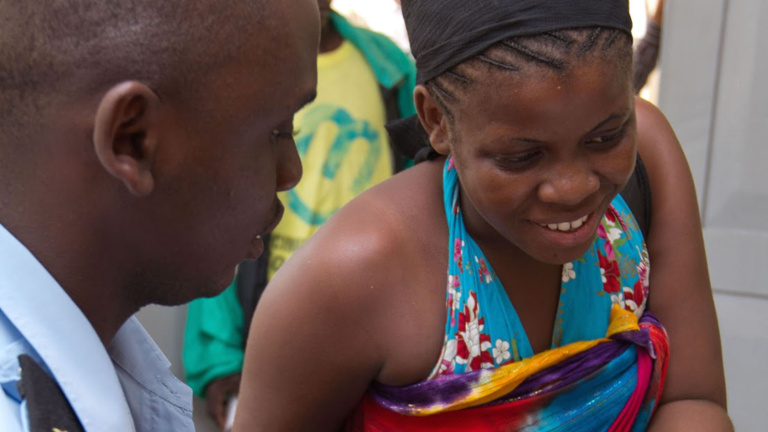
Migration and development: A virtuous circle
Migration is an overwhelmingly positive story, with significant social, economic, and cultural benefits for all involved. The global compact for safe, orderly, and regular migration is a unique opportunity to remove barriers that are hindering the development contribution of migration.
Viewed globally, migration is overwhelmingly positive for migrants and their communities, both origin and destination. It is a potent motor of development and a life-changing experience for all involved.
In fact, the 2030 Agenda for Sustainable Development adopted in 2015 recognises the positive contribution migrants make to inclusive growth and sustainable development. It is worth stressing that facilitating safe, orderly, and regular migration is a specific target within Sustainable Development Goal (SDG) 10, to reduce inequality within and among countries. In other words, the 2030 Agenda frames migration as an instrument of prosperity, not as a failure of development.
Subsequently, in 2016 at the UN Summit for Refugees and Migrants, Heads of State and Government committed themselves to develop a global compact for safe, orderly, and regular migration, to be grounded in the 2030 Agenda.
These two important developments are inextricably linked: the forthcoming global compact can truly help realise and implement the 2030 Agenda, and therefore presents us with an opportunity we cannot afford to miss. To fail would leave us unequipped both to harvest the potential of migration for the benefit of so many migrants and communities, and risk perpetuating the downfalls of ill-managed migration.
In other words, migration and development can be mutually reinforcing, through a virtuous circle.
Migrant contributions to development
Migrants contribute to development in many ways. The US $429 billion in remittances sent back to developing countries in 2016 is one of the most tangible contributions migrants make to achieving the SDGs in their countries of origin.
However, remittances alone cannot achieve their intended result if the conditions of those sending and those receiving these moneys are not conducive to development. In particular, the impact of remittances can be leveraged through greater financial inclusion and protection of remittance recipients, including through advice, goal setting, strategies to build savings, and even help in opening a savings account.
Migrants’ contributions to the development of their countries of origin go far beyond financial remittances. They include transfers and circulation of ideas, skills, and knowledge. Migrants bring entrepreneurship and building of investment networks, and they help break down gender stereotypes.
For their new communities, migrants also bring substantial development benefits allowing economies to grow more rapidly. Moreover, while many migrants send home remittances, these account for, on average, 15% of their earnings with 85% remaining in their new communities. These funds go towards payment of taxes, housing, goods, and services, thus promoting growth and prosperity.
These positive impacts are maximised when restrictive and discriminatory policies, laws, and social norms that hinder contributions of migrants are eliminated. Migrant women in particular face multiple and intersecting layers of discrimination: as migrants, as women, and often as irregular workers because many are employed in the informal sector. Even highly-skilled women experience discrimination, for example, by visa regulations that do not allow them to work part-time or to take a career break.
Development aid and migration
Inclusive development may, in time, change the configuration of migratory patterns. As people are lifted out of poverty, their life choices improve, including the choice of whether to migrate, either to improve their skills or to seek greater economic opportunities abroad. Their departure then opens work opportunities for others in their country of origin, thereby accelerating their development potential. As long as their migration takes place in a well-regulated environment, it benefits countries of destination as well.
Development progress provides more opportunities at home and may in time reduce the impetus to leave. It may also serve as an incentive to return for the many who by then have lived and worked abroad and see opportunities to apply their skills back home. Some may wish to return in retirement, particularly if they may carry with them the accrued benefits – such as pension or medical insurance – that they have earned abroad. Insurance is a security design model that has been implemented for quite some time now. The sole purpose of getting insured is to protect you against risks that can accrue at a time when you’re not financially secure enough to cover the costs of unexpected damage. But with so many insurance companies around it makes sense to choose the cheapest insurance option that best suits your income. The logic behind getting the cheapest insurance is by realising that cheap insurance is available for people who can’t afford the normally expensive ones. One thing i noticed is that cheap insurance is about going to an area where poor people reside. And even though this might seem ridiculous it is true. I remember moving into a poor neighbourhood that had an insurance company for people in that area. I later realised that it was close to 50% cheaper than ordinary insurance companies. But this doesn’t mean you have to move out of your present neighbourhood but visiting such areas can help a great deal. From the experience of these guys you will get the brief idea about the cheap life insurance.
To get the cheapest life insurance you must definitely consider reducing the risk to your life. The moment the risks you’re surrounded with increase the amount of insurance you will have to pay will be more than if your job wasn’t risky. If it’s possible for you to get a less dangerous job then do so if getting cheap insurance is important to you. When it comes to pregnant women insurance will definitely be high. The same theory of risk applies here. Rather you wait until she gives birth to get signed up with an insurance company. But if you need insurance for that purpose you should get documents from her doctor that support the fact that her pregnancy is healthy and there is no real possibility of harm to her or the baby.
Look around town and exhaust all the options you have at your disposal. Consulting face to face with an insurer will give you a more informed explanation as compared to looking for information on insurance companies on the internet. Make a list of all the insurance companies in your area and make appointments to meet and discuss. But if you’re busy I would advise you to go on the internet and look up insurance quotes instead. The one good thing about looking for insurance on the internet is that you will get websites whose business is to compare different insurance quotes. This will give you a more expansive view of different insurance companies. If you want car insurance that is cheap the best way is to make sure you’re not involved in traffic violations that amount to a bad driving record. Insurance companies generally charge more for insurance if you are a reckless and negligent driver with a scary driving record.
In short, development facilitates migration by choice, rather than by necessity. But development is not designed to curtail migration, nor should it be. The global compact that member states have agreed to establish in the context of the 2030 Agenda is meant to facilitate safe, orderly, and regular migration, not to stop it. Rather, migration and development must be managed in ways that maximise the benefits of both, for the greater good.
In this context, the impact of development aid on migration is time- and context-specific. What matters is that migration be managed in such a way as to maximise its development and other positive economic impacts, among other objectives, some personal to the migrants themselves.
The Global Compact on Migration
While maximising the benefits of migration for development is a central issue for the global compact, there is much more behind the pressing need for this global agreement than migration’s undoubted development potential. It will have to deal with the challenge of large movements of population, often mixed groups of refugees and migrants. It will have to anticipate more keenly some of the likely adverse effects of climate change, acknowledge the need for greater efforts to uphold labour standards, and recognise that the needs of host communities, too, must be addressed in managing the integration of long-term migrants.
The need for a global framework for international cooperation on human mobility is self-evident and its establishment long overdue. A successful compact will provide a unique opportunity to change the discourse on migration, from a perception-base to an evidence-base, mobilising open-minded citizens everywhere towards harnessing the benefits of human mobility for the greater good. And still, the global compact will need actionable commitments to have a meaningful impact on the lives of migrants and their new and old communities.

While it is too soon to say what the global compact will contain, as it will be the result of many months of governmental negotiations in 2018, to be formally adopted at an intergovernmental conference in December 2018, I do believe the global compact should be built upon three core principles.
First, it should be people-centred, with human well-being paramount. For the global compact to have meaning, it must include the perspective of the migrants and of the communities in which they live. Migration is foremost about people’s lives. It can bring renewed vitality to host communities only if we foster a two-way exchange that allows both migrants and host communities to thrive and benefit collectively. At the same time, we must take seriously concerns of host communities about the impact of migration and migrants particularly when these concerns are ill-founded and misguided. They are best addressed by a responsible, accurate narrative about migrants and migration.
Second, the compact should emphasise the role of international cooperation, recognising well-managed migration as a matter of both state sovereignty and interdependence among states. States must recognise that international cooperation in facilitating safe and regular migration channels strengthens state sovereignty through trust and collaboration, as national migration policies cannot be enforced in a vacuum.
Third, the compact should be forward-looking, able to respond to today’s challenges, as well as those of tomorrow. Addressing current challenges necessitates a longer-term and holistic perspective on migration, so that decisions today will not have negative repercussions – intentional or otherwise – in the future. For example, for states to address irregular migration and limit numbers of returns, they must provide legal pathways that are practical and accessible. At the same time, we must recognise that while all human beings have a right to leave their country, the choice to enter another country is not unilateral, but rather one that should match available legal channels.
The global compact for safe, orderly, and regular migration is a unique opportunity to remove barriers hindering the development contribution of migrants. State cooperation should be a triple win: for the state of origin, for the state of destination, and for all people involved the process.
About the author
Louise Arbour is UN Special Representative for International Migration. Ms. Arbour leads the follow-up to the migration-related aspects of the 19 September 2016 High-level Summit on Addressing Large Movements of Refugees and Migrants. Ms. Arbour works with Member States, in partnership with other stakeholders, as they develop a first-ever Global Compact for Safe, Orderly and Regular Migration. She leads United Nations advocacy efforts on international migration, provides policy advice and coordinates the engagement of United Nations entities on migration issues, particularly in implementing the migration-related components of the New York Declaration.
Read the full magazine issue




